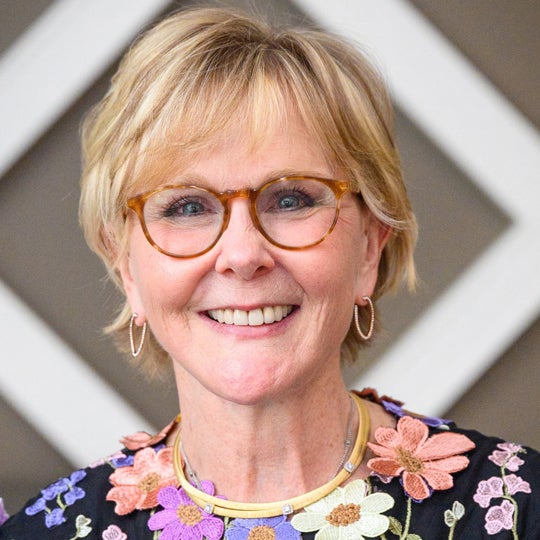Notes at the Crossroads

*Originally posted on The Center for Effective Philanthropy’s blog
Reflections on CEP’s “Emerging from Crisis: The State of Nonprofits” Survey
In January 2020, the COVID-19 pandemic was an abstract concept to most of us. By March, we started experiencing the overwhelming impact caused by COVID-19 in the U.S., affecting every aspect of our lives. Since that time, many social sector organizations have been enduring challenges for which they had no time to plan and with limited resources. Some observers were predicting that 30 percent of the country’s nonprofits would go out of business.
Despite those difficulties, there are reasons for us to now feel hopeful. The focus is shifting to recovery, thanks to medical advancements, inspired funders, flexible staffs and understanding boards.
Rebuilding Together
The Center for Effective Philanthropy’s (CEP) recent survey on the state of nonprofits outlines how the potentially catastrophic impact to the sector was curtailed. We benefited from a series of wide-ranging federal relief programs and a strong collaborative effort among funders, foundations and philanthropists around the world. This remarkable, collective effort stemmed the potentially disastrous outcome to organizations who otherwise may have closed their doors. Critical support flowed faster and had fewer restrictions than before. Funders responded more quickly and creatively than we could have imagined.
Donor-advised fund (DAF) donors responded in the same way, with great speed and flexibility. Most grants that donors recommended were unrestricted to the recipient charities. Those unrestricted funds allowed the organizations to spend the funds where they had the greatest need. Here are some other compelling statistics:
- In the U.S., charitable giving increased 7.5 percent in the first six months of 2020, compared to the same period in 2019.
- DAF donors played a role: charitable dollars from DAFs increased 30 percent during that time in seven of the eight IRS-defined charitable subsectors.
- Every charitable subsector, from education to human services to the environment, received a higher number of DAF grants than in 2019.
In my experience, DAF donors are reliable and loyal philanthropists. CEP’s report found that eighty six percent of DAF donors either increased or matched their previous grants in 2020. We know from 2008 that DAF donors offer “counter-cyclical” support, meaning that during an economic downturn, donors will recommend the same amount of grants or more when other critical sources of income disappear. Throughout challenging times, we have witnessed how individual donors and institutional funders support causes that need critical capital to operate, or in terms of the past year, survive.
Necessity is the Mother of Invention
A crisis can be a time for funders to reflect on the status quo. In the last year, we witnessed how funders re-examined endowment management traditions and grantmaking strategies. To echo CEP’s survey, much work remains.
Arts and culture organizations, among the hardest hit in the social sector, will need increased support to return to pre-pandemic levels of operation. Human Services organizations will play a key role as federal pandemic support programs end funding to individuals and businesses.
Data from 2020 indicates that DAF donors both sustained support for their favorite nonprofit organizations and added new causes. NPT’s donors recommended grants to 29,000 unique charities, a 22 percent increase compared with 2019. Over the past year, I have observed:
- Donors who historically granted to local organizations elected to support charities located in other places.
- Donors who support women’s and girls’ causes directed support to racial and economic justice.
- Donors made grants to new causes that did not exist even months before, such as supplying personal protective equipment for frontline workers or funding for vaccine related activities.
Taking Steps Towards Equity
CEP’s findings tell us the following:
- Nonprofits led by women and minorities experienced more difficulty in both communicating with funders and receiving flexible terms around the grants their organizations received.
- Racial justice movements around the world brought long overdue attention to inequities in funding and support for BIPOC (Black, Indigenous, and people of color) Communities.
- Donors will need to intentionally engage with those who have historically been excluded from larger institutional funding opportunities.
- We must spotlight positive examples, including Black Philanthropy Month and the recently created Asian American Foundation, which exist to bring attention to and support for long underserved communities.
Unprecedented. Historic. Disruptive. All these words have been used to describe 2020. They are all accurate. The “new normal” in the philanthropic sector may continue to shift. Funders need to regularly analyze, question and challenge past practices. With a philanthropic ecosystem in a state of intense change and still responding to a global health crisis, flexibility will be key. We can use the lessons of the last eighteen months to create a more inclusive, thoughtful future.
About National Philanthropic Trust
Founded in 1996, National Philanthropic Trust (NPT) marks its 25th Anniversary in 2021 as the largest national, independent public charity that manages donor-advised funds and one of the leading grantmaking institutions in the U.S. Since its founding, NPT has raised more than $24 billion in charitable funding and has made more than 400,000 grants exceeding $12.4 billion to nonprofits around the world. NPT annually publishes the Donor-Advised Fund Report, the sector’s authority on the state of DAF philanthropy. Visit NPT’s resource library to learn what you can do with a DAF and NPT impact investing options. More at NPTrust.org and NPTGivingPoint.org.


